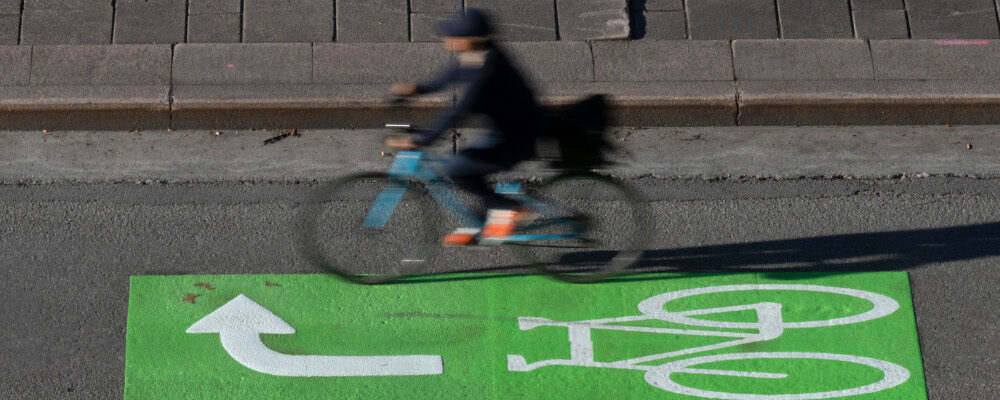I’ve got a friend who lives in my old neighourhood. Let’s call him Dave. Dave is an ordinary guy. He has a wife and two young kids. He owns a townhouse near downtown Toronto. He’s doing alright in life. He pays his mortgage and his property taxes (grudgingly). He owns a car. He commutes into the financial district, though less often than before COVID. Dave’s got one big problem, though: bike lanes. Specifically, the lack of them.
Dave lives in the kind of neighbourhood where driving is usually impractical. He walks his kids to daycare, picks up groceries at the neighbourhood supermarket. He owns a car, which he mostly uses to visit his in-laws outside the city. But he does need to get around the downtown core. You’d think that would be fairly easy. It’s a reasonably compact area, and we have subway, streetcar, and bus options. The trouble is that the subway is mainly oriented to funnel people in and out of the core (as opposed to around the core), and buses and streetcars get stuck in traffic (especially with the logistical nightmare unleashed by Ontario Line construction). For a lot of trips, this leaves biking or a very long walk. So when he needs to leave the neighbourhood, he bikes.
Some friends of mine often get together on the east side of town, where I live. Dave often joins us. He can’t really come out until the kids are asleep, and by that point the streetcars are hit and miss. So he bikes.
Toronto has reasonably accessible bike-sharing options (i.e. rentals), so he can pick up a bike near his house and drop it off near his destination. If he has a few beers, he Ubers home. The round-trip bike ride takes him less time than it takes me to get to our usual spot by a combination of transit and walking (and I’m much closer). He follows the traffic laws and uses the available infrastructure, when available, and bikes in traffic otherwise.
Despite being cautious and responsible, he usually arrives with a story about nearly getting hit by a car. Sometimes it’s because of a negligent driver, other times because of inadequate bike infrastructure.
I’m not as brave (or foolhardy) as Dave, so I tend not to bike in the city. I’ve only done it a handful of times. But I decided that rather than just write about secondhand experiences, I’d take a ride myself a few weeks ago.
I settled on one of my regular spots on the east side lately. I grabbed a bike from down the street and headed out for what Google informed me would be a 23-minute bike ride.
It was a mixed bag.
I headed north on a residential road to Dundas, one of the main arteries in the neighbourhood. Traffic is slow, no big deal. Much of Dundas was also fine since there are stretches where the bike lane is separated from traffic. But the parts that aren’t separated were a bit white knuckle. All that separated me from cars whipping through is a bit of paint, and you need to be on the lookout for car doors opening in front of you. As I travelled east, the infrastructure got less safe and the drivers got faster. The last few stretches were, to put it mildly, uncomfortable. I made it in one piece, but I’m not sure I’d make that trip again. I’ll stick to quiet residential streets and protected bike lanes.
Now, you might say that we shouldn’t subsidize people’s lifestyle choices. That’s entirely fair. But let’s circle back to Dave for a second. He lives downtown. He pays property taxes on expensive downtown property values. And he doesn’t use much infrastructure. People like Dave help keep property taxes low. He is subsidizing the rest of us. A few million dollars here and there for bike lanes is peanuts compared to what we’re spending on, say, the Gardiner Expressway, or the Ontario Line (which I might add, will mainly benefit suburban commuters). You might even say that bike lanes are fiscally conservative.

Moreover, not everyone can afford to drive. Your Uber Eats bike delivery guy sure can’t. Even relatively senior bank employees tend not to have parking spots (Dave doesn’t have one). Owning a car and paying $35 dollars a day to park it downtown isn’t a practical solution for a four-kilometre commute from my neighbourhood, for instance. Without adequate transit options, cycling is often the best option. But it isn’t always safe.
We should think of safe bike infrastructure as a public safety issue. If we don’t have reasonable infrastructure or traffic enforcement, people like Dave are less likely to get home in one piece. We should care just as much about bike safety as we care about the safety of drivers or transit riders. Everyone deserves to get home safely.
I’m not saying we should force everyone out of their cars. But we should give people more choices. We can spare a parking lane here and there to give people the choice to get around safely by bike. It’s probably better for everyone if people like Dave get home safely at night. Bike lanes are practical and, dare I say, conservative, infrastructure.




